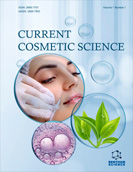Abstract
Asparaginase (ASNase) is widely used as an important component of first-line treatment for acute lymphoblastic leukemia (ALL). Although it is associated with a high rate of complete remission (~93%), challenges remain due to several side effects ranging from immune reactions to severe toxicity, largely associated with its higher immunogenicity and glutamine coactivity. Innovative products have therefore been devised to minimise these adverse reactions while increasing the enzymes’ pharmacokinetic properties, stability, and efficacy. This review focuses on commercially available formulations and others that remain in development, discussing the most recent strategies for preparing alternative formulations of the enzyme to be less immunogenic and have low glutaminase coactivity by using site-specific mutagenesis, PEGylation, and encapsulation techniques.
Graphical Abstract
[http://dx.doi.org/10.3390/books978-3-03921-346-7]
[http://dx.doi.org/10.1016/S2352-3026(17)30232-6] [PMID: 29304322]
[http://dx.doi.org/10.1158/0008-5472.CAN-17-2106] [PMID: 29343523]
[PMID: 23591360]
[PMID: 10828010]
[PMID: 19707421]
[http://dx.doi.org/10.1016/S0169-409X(03)00110-8] [PMID: 14499708]
[http://dx.doi.org/10.1002/cncr.25489] [PMID: 20824725]
[http://dx.doi.org/10.1155/2015/627031] [PMID: 26180806]
[http://dx.doi.org/10.1016/j.htct.2019.07.010] [PMID: 31801703]
[http://dx.doi.org/10.1182/blood.V83.2.386.386] [PMID: 8286739]
[http://dx.doi.org/10.1016/0268-9499(94)90248-8]
[http://dx.doi.org/10.1023/A:1008368916800] [PMID: 10761754]
[http://dx.doi.org/10.1016/S0140-6736(08)60457-2] [PMID: 18358930]
[http://dx.doi.org/10.32635/2176-9745.RBC.2018v64n1.115]
[http://dx.doi.org/10.1016/S2352-3026(17)30231-4] [PMID: 29304323]
[http://dx.doi.org/10.21767/1791-809X.1000514]
[http://dx.doi.org/10.3109/10428194.2015.1101098] [PMID: 26457414]
[http://dx.doi.org/10.1007/s00280-014-2402-3] [PMID: 24515335]
[http://dx.doi.org/10.1177/1082013209353219] [PMID: 21339127]
[http://dx.doi.org/10.1016/j.molcatb.2014.08.021]
[http://dx.doi.org/10.1056/NEJM197003262821307] [PMID: 4906449]
[http://dx.doi.org/10.1016/j.jmb.2007.03.061] [PMID: 17451745]
[http://dx.doi.org/10.1016/0959-8049(96)00131-1] [PMID: 8911116]
[http://dx.doi.org/10.1021/bi991797d] [PMID: 10684596]
[http://dx.doi.org/10.1016/S1040-8428(98)00015-8] [PMID: 9768345]
[http://dx.doi.org/10.1002/mpo.2950030410] [PMID: 337095]
[http://dx.doi.org/10.1002/bab.1888] [PMID: 31954377]
[http://dx.doi.org/10.3109/10428194.2014.1003056] [PMID: 25586605]
[http://dx.doi.org/10.1007/s00280-017-3492-5] [PMID: 29204688]
[http://dx.doi.org/10.1002/pbc.24938] [PMID: 24436152]
[http://dx.doi.org/10.1158/1078-0432.CCR-19-1255] [PMID: 31444252]
[http://dx.doi.org/10.1634/theoncologist.12-8-991] [PMID: 17766659]
[http://dx.doi.org/10.1016/j.blre.2020.100651] [PMID: 32014342]
[http://dx.doi.org/10.1016/S1470-2045(18)30782-4] [PMID: 30507478]
[http://dx.doi.org/10.3109/10428194.2013.803224] [PMID: 23662993]
[http://dx.doi.org/10.2174/092986710791299920] [PMID: 20423302]
[http://dx.doi.org/10.1182/blood-2009-09-245951] [PMID: 20007809]
[http://dx.doi.org/10.1200/JCO.2014.55.5763] [PMID: 25348002]
[http://dx.doi.org/10.1016/j.blre.2017.06.002] [PMID: 28697948]
[http://dx.doi.org/10.1080/10428194.2017.1386305] [PMID: 29045165]
[http://dx.doi.org/10.3324/haematol.2018.199448] [PMID: 30237274]
[http://dx.doi.org/10.3324/haematol.2015.137380] [PMID: 26928249]
[http://dx.doi.org/10.1182/blood.V99.6.1986] [PMID: 11877270]
[http://dx.doi.org/10.1097/00043426-200404000-00002] [PMID: 15087948]
[http://dx.doi.org/10.1200/JCO.2000.18.7.1525] [PMID: 10735901]
[PMID: 17695416]
[http://dx.doi.org/10.2165/00003088-200544040-00003] [PMID: 15828851]
[http://dx.doi.org/10.1038/sj.leu.2401007] [PMID: 9593262]
[http://dx.doi.org/10.1038/sj.leu.2400703] [PMID: 9264396]
[http://dx.doi.org/10.3324/haematol.2014.109413] [PMID: 25150254]
[http://dx.doi.org/10.1007/8904_2012_156] [PMID: 23430503]
[http://dx.doi.org/10.1188/14.CJON.E107-E112] [PMID: 25427712]
[PMID: 15113036]
[http://dx.doi.org/10.1111/bjh.12016] [PMID: 22909259]
[http://dx.doi.org/10.1200/JCO.19.02208] [PMID: 31770057]
[PMID: 6339039]
[http://dx.doi.org/10.1016/j.biopha.2021.111616] [PMID: 33932739]
[http://dx.doi.org/10.1177/1078155214551590] [PMID: 25245038]
[http://dx.doi.org/10.1002/biot.200900218] [PMID: 20069580]
[PMID: 17717965]
[http://dx.doi.org/10.3109/10428199309149129] [PMID: 8481665]
[http://dx.doi.org/10.1200/JCO.2019.37.15_suppl.10006]
[http://dx.doi.org/10.1016/B978-0-444-64081-9.00010-3]
[http://dx.doi.org/10.1158/1078-0432.CCR-19-2975] [PMID: 31641006]
[http://dx.doi.org/10.1016/j.critrevonc.2015.01.002] [PMID: 25630663]
[http://dx.doi.org/10.4103/0976-500X.184769] [PMID: 27440950]
[http://dx.doi.org/10.2217/fon.14.138] [PMID: 24983955]
[http://dx.doi.org/10.1586/17474086.2016.1142370] [PMID: 26765930]
[http://dx.doi.org/10.1007/s10637-014-0102-9] [PMID: 24829072]
[http://dx.doi.org/10.1110/ps.9.10.2009] [PMID: 11106175]
[http://dx.doi.org/10.1182/blood-2010-07-298422] [PMID: 21106986]
[PMID: 29508977]
[http://dx.doi.org/10.1182/blood.V114.22.2034.2034]
[http://dx.doi.org/10.1371/journal.pone.0211951] [PMID: 30753228]
[http://dx.doi.org/10.1371/journal.pone.0197643] [PMID: 30052638]
[http://dx.doi.org/10.1016/S0168-3659(97)00196-X] [PMID: 9685935]
[http://dx.doi.org/10.1016/S0378-5173(03)00071-1] [PMID: 12695020]
[http://dx.doi.org/10.1007/s00253-016-7668-4] [PMID: 27314846]
[http://dx.doi.org/10.1038/s41598-017-10758-4] [PMID: 28860480]
[http://dx.doi.org/10.1371/journal.pone.0178174] [PMID: 28542249]
[http://dx.doi.org/10.1016/j.critrevonc.2006.07.009] [PMID: 17011787]
[http://dx.doi.org/10.1038/bjc.2014.425] [PMID: 25072259]
[http://dx.doi.org/10.1016/j.leukres.2015.04.008] [PMID: 25941002]
[http://dx.doi.org/10.1186/s13045-017-0509-9] [PMID: 28750681]
[http://dx.doi.org/10.1182/blood-2013-10-535112] [PMID: 24659632]
[http://dx.doi.org/10.1016/j.mehy.2018.01.004] [PMID: 29447943]
[http://dx.doi.org/10.4236/aim.2012.22019]
[http://dx.doi.org/10.1182/blood.V120.21.2571.2571]
[http://dx.doi.org/10.1002/jps.22054] [PMID: 20049941]
[http://dx.doi.org/10.1002/biot.201000013] [PMID: 20440716]
[http://dx.doi.org/10.1021/cm402180t]
[http://dx.doi.org/10.1016/S0378-5173(02)00046-7] [PMID: 11955814]
[http://dx.doi.org/10.1002/jps.2600710523] [PMID: 6212669]
[http://dx.doi.org/10.1023/a:1021125617828] [PMID: 15348652]
[PMID: 22312702]
[http://dx.doi.org/10.1074/jbc.M113.545038] [PMID: 24657844]
[http://dx.doi.org/10.1074/jbc.M114.609552] [PMID: 25320094]
[http://dx.doi.org/10.1590/S0104-66322013000200003]
[http://dx.doi.org/10.1084/jem.98.6.565] [PMID: 13109110]













